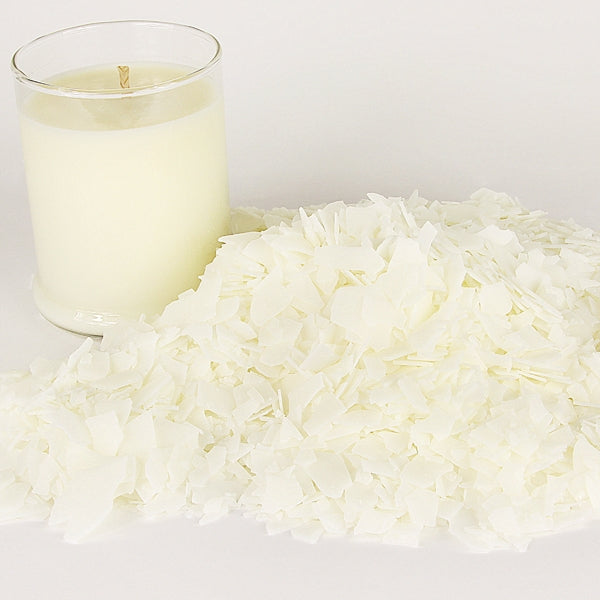Brighten Your Environment with Crystal Soy Candles and Home Fragrance
Brighten Your Environment with Crystal Soy Candles and Home Fragrance
Blog Article
From Wick to Wax: Recognizing the Chemistry Behind Soy Wax Candles and Their Environmental Effect
As we illuminate our areas with the cozy glow of candles, there exists a world of detailed chemistry behind the relatively easy act of lighting a soy wax candle light. The selection in between soy and paraffin wax expands past mere aesthetic appeals, delving right into the world of environmental impact and the really make-up of the products. Recognizing the molecular structure of soy wax and its combustion process drops light on the exhausts launched right into our surroundings. Join us as we unravel the scientific details behind soy wax candles and discover their effects on our environment.
Soy Wax Vs. Paraffin Wax
When contrasting soy wax and paraffin wax for candle making, it is crucial to comprehend the unique qualities and advantages of each material. Soy wax is a natural, renewable source originated from soybean oil, making it green and eco-friendly - candles. On the other hand, paraffin wax is a by-product of oil refining, which increases concerns about its ecological effect and sustainability
Soy wax candles shed cleaner and send out much less residue compared to paraffin wax candles, making them a much healthier option for interior air quality. In addition, soy wax has a reduced melting point, enabling a longer-lasting candle light that disperses scent a lot more successfully. Paraffin wax, on the various other hand, tends to melt faster and much less easily, possibly launching hazardous chemicals right into the air.
From a sustainability point of view, soy wax is favored for its biodegradability and renewable sourcing, straightening with the expanding consumer choice for eco conscious items. While paraffin wax has been a conventional option in candle light making because of its cost and simplicity of use, the shift towards green options like soy wax is getting momentum in the sector.
Chemical Make-up of Soy Wax

Combustion Refine in Soy Candles
The chemical make-up of soy wax straight affects the burning process in soy candle lights, affecting variables such as shed time, scent release, and ecological effect. When a soy candle light is lit, the warm from the flame melts the wax near the wick.
The combustion effectiveness of soy candles is affected by the purity of the soy wax and the quality of the wick. In addition, soy wax candles have a lower ecological influence contrasted to paraffin candles due to their renewable and biodegradable nature.

Ecological Benefits of Soy Wax

Thought about a sustainable alternative to conventional paraffin wax, soy wax uses noteworthy ecological benefits that make it a popular choice amongst eco-conscious consumers. One substantial benefit of soy wax is its sustainable sourcing. Soy wax is originated from soybean oil, which is predominantly grown in the United States. The farming of soybeans aids sustain local farmers and minimizes the dependence on non-renewable fossil fuels utilized in paraffin wax production. Furthermore, soy wax is naturally degradable, meaning it breaks down normally without releasing hazardous toxic substances into the atmosphere. This characteristic makes soy wax candle lights a much more eco-friendly option compared to paraffin wax candles, which are made from petroleum, a non-renewable resource. Additionally, soy wax burns cleaner and generates less soot than paraffin wax, contributing to far better interior air top quality and reducing the need for cleansing and upkeep. Generally, the environmental advantages of soy wax align with the informative post growing demand for lasting and eco-friendly items in the marketplace.
Recycling and Disposal Factors To Consider
Recycling and correct disposal of soy wax candles play a vital duty in preserving environmental sustainability and minimizing waste in houses and areas. When it comes to reusing soy wax candles, the first step is to ensure that the candle has actually melted entirely.

In terms of disposal, if recycling is not a choice, soy wax candle lights are eco-friendly and can be securely taken care of in many house waste systems. However, it is always suggested to talk to neighborhood try these out reusing centers or waste monitoring services for particular standards on candle disposal to guarantee appropriate handling and environmental management.
Verdict
In final thought, the chemistry behind soy wax candles exposes their ecological advantages over paraffin wax candle lights. Soy wax, acquired from soybean oil, burns cleaner and generates less residue when contrasted to paraffin wax.
When comparing soy wax and paraffin wax for candle light making, it is essential to understand the distinct qualities and benefits of each material (home fragrance).Soy wax candle lights melt cleaner and send out less residue compared to paraffin wax candles, making them a much healthier choice for interior air high quality.Thought about a lasting choice to traditional paraffin wax, soy wax offers remarkable ecological advantages that make it a popular option amongst eco-conscious customers. Soy wax burns cleaner and generates much less soot than paraffin wax, adding to better indoor air high quality and lowering the requirement for cleaning and upkeep.In final thought, the chemistry behind soy wax candle lights exposes their environmental advantages over paraffin he has a good point wax candles
Report this page